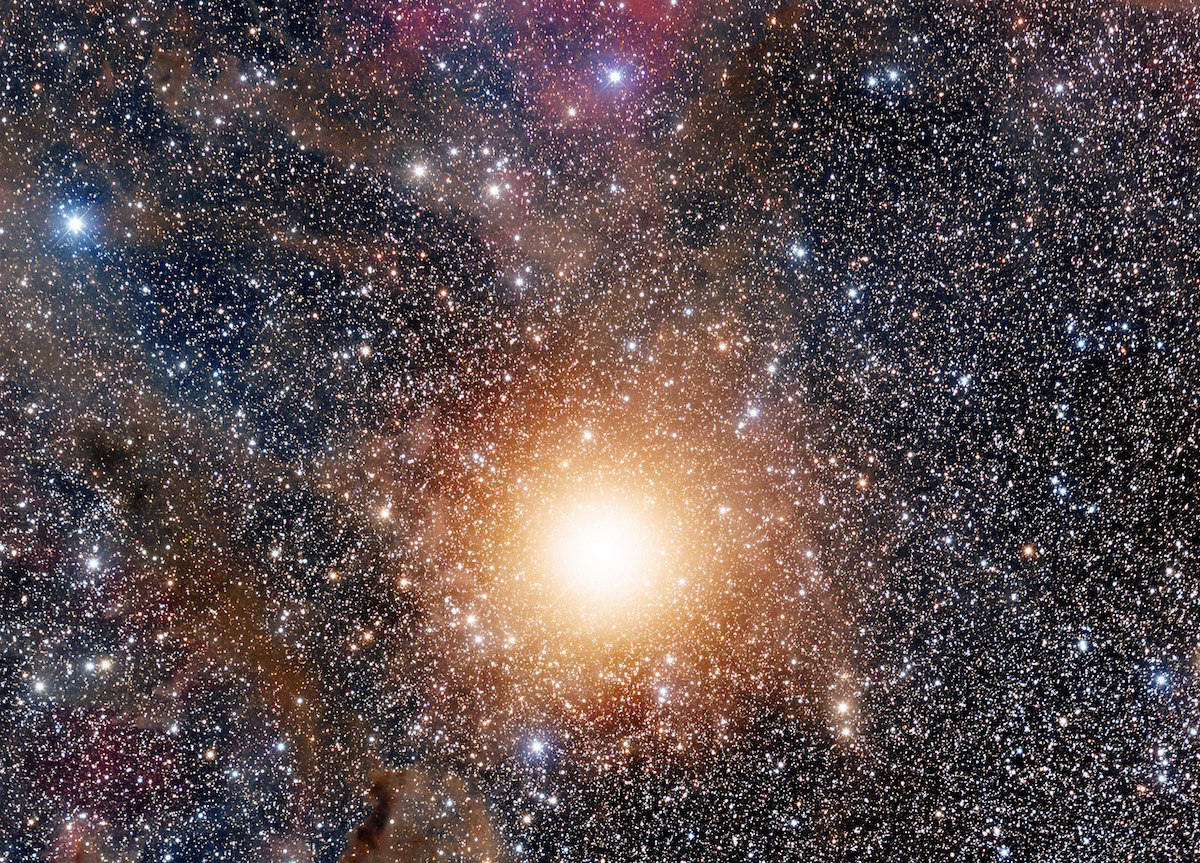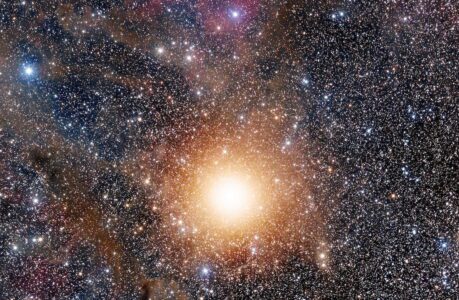Betelgeuse is one of the most intriguing stars in the night sky. Located in the constellation of Orion, this massive red supergiant has captivated astronomers for years with its unusual behaviour. In this article, we will delve into the mysteries of Betelgeuse and explore everything we know about this enigmatic star.
Betelgeuse size and Brightness
Betelgeuse is a massive star, with a radius estimated to be about 1,000 times that of the Sun. If Betelgeuse were placed in the centre of our solar system, its surface would extend beyond the orbit of Jupiter. It’s also incredibly bright – at its peak, Betelgeuse is one of the brightest stars in the sky. It’s a red supergiant, which means that it’s near the end of its life cycle and is rapidly burning through its fuel. Betelgeuse’s high luminosity also means that it’s producing a lot of energy, which causes it to lose mass rapidly.
Betelgeuse’s Irregular Behaviour
Despite its massive size and high brightness, Betelgeuse is also known for its erratic behaviour. In late 2019, the star dimmed to a level not seen in decades, leading some astronomers to speculate that it might be about to go supernova. However, the dimming turned out to be caused by a dust cloud ejected from the star’s surface. Betelgeuse has also been known to fluctuate in brightness over shorter periods, which is typical of red supergiants.
Betelgeuse’s Future
As a red supergiant, Betelgeuse is nearing the end of its life cycle. It will eventually run out of fuel and collapse in on itself, causing a massive explosion known as a supernova. When this will happen is still up for debate, but most astronomers agree that it could occur at any time within the next million years. When Betelgeuse does go supernova, it will be visible from Earth during the day and will likely be the most spectacular astronomical event of our lifetimes.
In conclusion, Betelgeuse is a fascinating star that has captivated astronomers for years. Its massive size, high brightness, and irregular behaviour make it a unique and mysterious celestial body. As we continue to study and learn more about this enigmatic star, we may uncover new secrets about the universe and our place in it.
How can I see Betelgeuse
Betelgeuse is one of the brightest stars in the night sky and can be seen with the naked eye. It is located in the constellation of Orion and is the bright red star that marks the upper-left corner of Orion’s familiar “shoulder.”
The best time to see Betelgeuse is during the winter months in the Northern Hemisphere, when Orion is high in the sky. To locate Orion, look for three bright stars in a row, known as Orion’s belt. Betelgeuse is located just to the upper left of Orion’s belt, and its reddish colour makes it stand out from the surrounding stars.
If you have a pair of binoculars or a telescope, you can get an even better view of Betelgeuse. Through a telescope, you can see that the star is not a single point of light, but rather has an irregular shape due to its unstable surface.
It’s worth noting that Betelgeuse is known for its variability in brightness, so it may not always appear as bright as it does at other times. However, if you keep an eye on the sky during the winter months and locate Orion, you should be able to spot this fascinating star.

